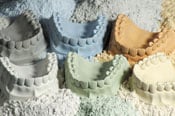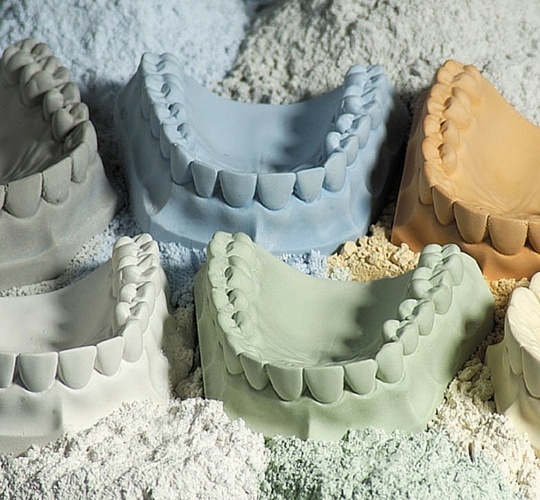As someone who has worked with many dental gypsum products, I have encountered all types of issues from changing working times, brittle models, to just overall odd appearances. In some cases they were due to contaminated material. The biggest culprit in this case is the stone bin. Most of us use them, so we need to be aware of a few things.
Storage
Cross contamination can occur from technicians pouring different products on top of one another after the bin is empty. Remember, all gypsums have different properties and composition. Essentially mixing them is inviting unpredictability and issues that can pop up later in the case process. When gypsum is contaminated, humidity - no matter how little - can get trapped and affect the setting speed of the new material. We add water to gypsum to mix it and get it into the form we want. The open air has already started that process on the residue of the old material still in the bin. Ideally, each material should be in separate containers so the materials can avoid the risk of cross contamination.
Handling the Impressions
If we are pouring a model in an alginate impression material, and we allow the impression to be super saturated by wrapping it in a wet paper towel or conversely, we allow it to be dried out, it can create surface issues on the resultant model. Likewise, if polyvinyl impression material is used, it should set a minimum of 2 hours before it is poured. Gasses that are given off from the impression material can create surface issues in the setting stone. It usually manifests itself as tiny negative bubbles on the model’s surface. Very similar in appearance to volcanic rock.
Residual Disinfectant Remaining in the Impression
Even if it appears to be gone, dried disinfectant on the surface of the impression material can reanimate when it comes in contact with the stone-water mixture. The result can be a surface that is fuzzy, chalky or distorted in detail. Cleaning the impression with a gentle cleaning agent like Dawn dish soap and a soft bristle brush before rinsing will usually eliminate the residual disinfectant and prevent the problem. You can even make a cleaning solution beforehand. Simply mix a tablespoon of soap and quart of water in a small container. The impression can then be easily dipped, brushed out and rinsed under running water.
Follow the Manufacturer's Instructions
Of course, the most important aspect of working with any dental gypsum is to follow the manufacturer’s water/powder ratio. This cannot be accomplished by “eyeballing”. The gypsum density varies, depending on where the material was taken from in the box. The fluffy top of the box or the condensed area at the bottom of the box will both yield different weights. Gypsum is not alginate and can’t be thought of or used in the same way.
The only accurate way is to actually weigh the stone is on a calibrated scale in order to know exactly how much water is required. Failure to adhere to the recommended water-powder ratio can result in potential problems with the restoration. Years of experience doesn’t exempt a dental technician from error if they fail to follow instructions. You might sometimes be lucky, but eventually problems will arise - and not from the material. These problems can be prevented simply by learning new and better habits.









Leave a comment